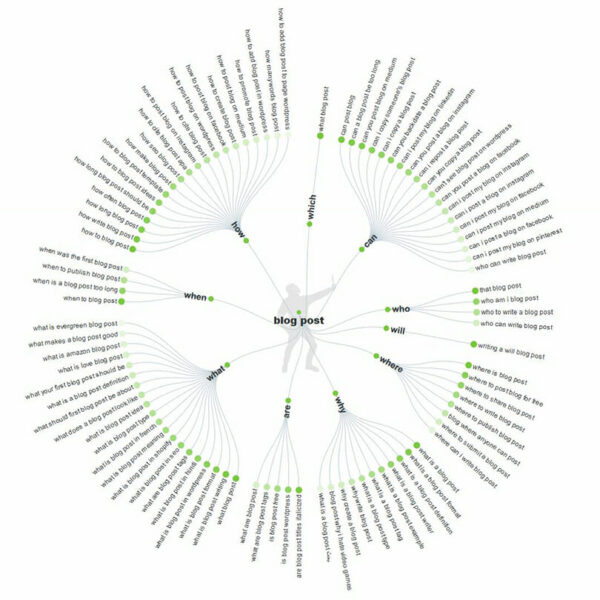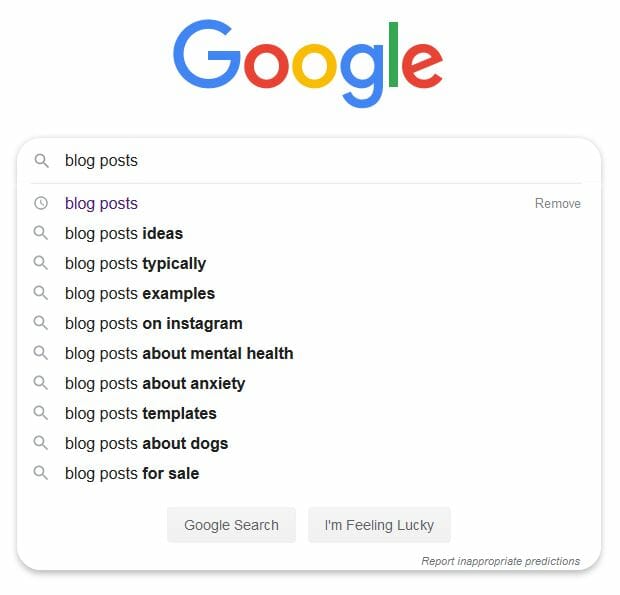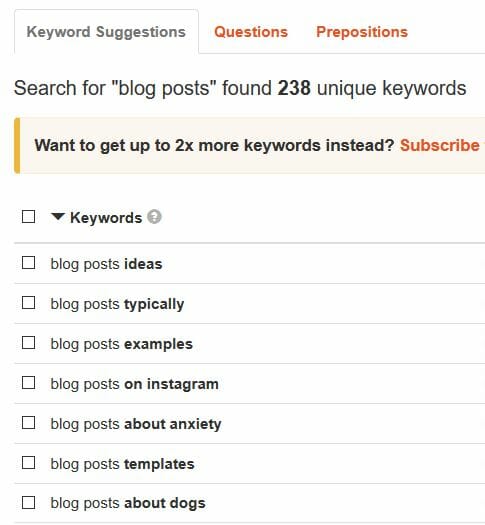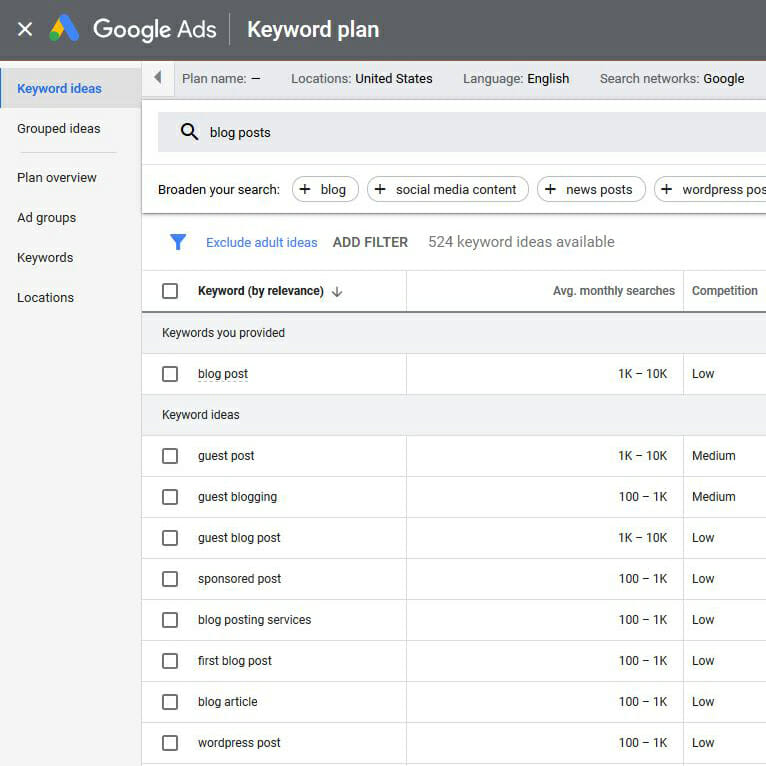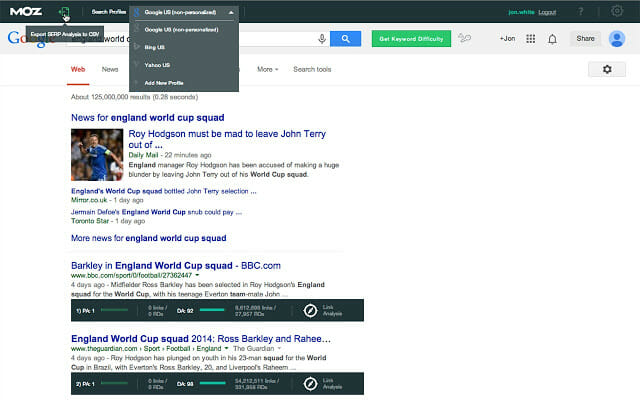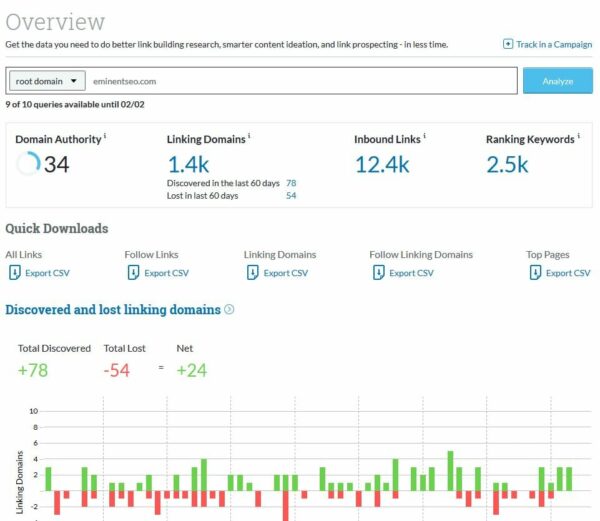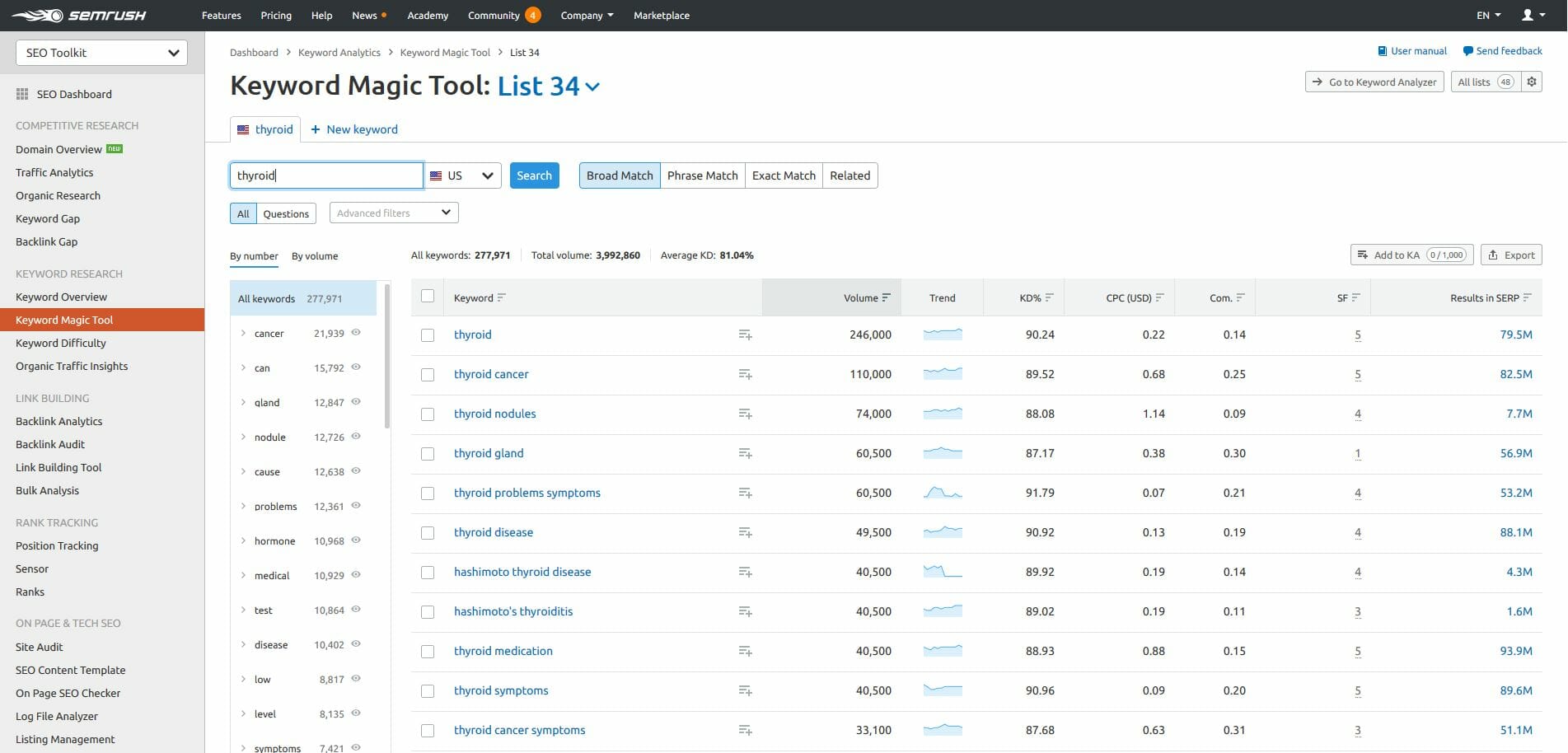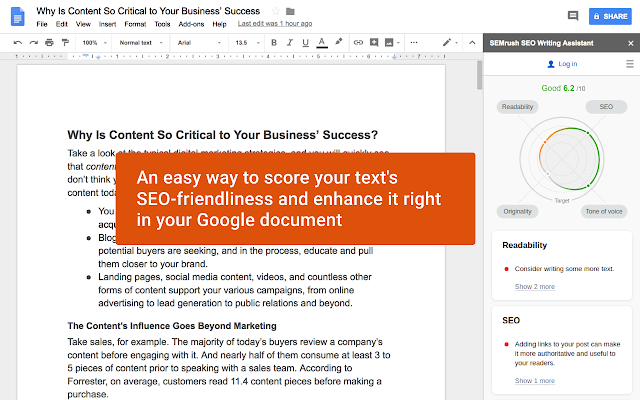This site contains affiliate links, which means we could earn a commission on anything purchased through those links. See our full disclaimer here.
The Dangers of Blog “Selling”
We’ve all read those comments on social media posts, right?
“Clickbait!”
“Don’t read – it’s an ad.”
People don’t like being advertised to, and most can sniff out a promotional article from infinite (cyber) miles away. How is it possible, then, to write a blog post or article that ranks well, but does not come off as salesy? How do we keep posts informative that people find useful, all while moving your SEO efforts forward? This is the holy grail of content marketing, and it’s easier to achieve than you might think. Indiana Jones Time!!!!
Following a specific approach to content writing can help you make the most of your content marketing efforts. Here, you’ll learn how to start a blog and create content that helps improve your online visibility. Can you actually sell your products or services without your prospects calling clickbait foul? We know you can. It isn’t rocket science… much. We’ll lay out the process, step by step.
Step One: Gather Your Content Tools
Like any good recipe, you should make sure you have all the ingredients necessary before throwing everything together. Let’s face it, shortcuts and substitutions rarely work out well, and you likely have memories of failed cookie batches to prove it. Before you just dive into content writing, make sure you have proven quality tools at your disposal that aid in the creation of your content. You can break these tools down into general categories: those for writing and editing, those for finding high quality images, and those for improving the search optimization of the article you’re going to write. We’ll talk more about specific tools later, but, in general, we like tools like Grammarly and Canva to aid in the creation of content, screen captures for images, and keyword research tools like SEMRush.
Step Two: Create a Blog Post Template
To have an idea of what a blog post should look like, it is helpful to have a blog post template downloaded. There are several different places you can find these. Google Docs has one, for example, as does Hubspot. Why use a template? Why not just open up a word document and get to writing?
For a couple of very compelling reasons. First, blog templates force you to plan. Even if you consider yourself a “planner,” you might not do the same kind of exhaustive outlining that comes with working from a template.
Second, it’s easier…. the fields are already laid out for you! Why wouldn’t you make this process easier on yourself? Working from a blog template does just that. Fill in the blanks and move on with your day (it’s not exactly THAT easy, but it does minimize the amount of blank-screen gaping during the content creation process).
Blog templates, at a basic level, force you to take a thoughtful approach to your content creation. Your fields may include keyword research, which focuses your plan on social sharing, internal linking, and more. Just delete sections that aren’t relevant to your particular post and prepare to dive into the creation process!
Now, here is the good news: Eminent SEO has a Google Doc template that you can nab in the link below!
Nab This Sexy Blog Template
Here’s How to Use the Template:
- Open the template link and make a copy (go to File>Make a Copy)
- Decide on the type of content you will create (Blog post? Webpage? White paper? Guest post?)
- Plan your content by using the spaces in between the brackets provided and links to tools we love to use.
- Fill in the blanks using our tips and add your own touch!
Tips For Using the Eminent SEO Blog Post Template and Content Marketing Plan:
- Include your key phrase in the Title, and keep it to 60 characters max (read these tips on writing compelling headlines)
- Don’t forget a meta description, which should be a single sentence summarizing your piece (155 character maximum), including the main key phrase.
- Create a shortcut URL with your key phrase (ly)
- Don’t forget your social media plugs! Share with your inside and outside network using tools like
- Come up with potential hashtags that will help your content trend. Learn more about hashtag research and development.
We’ll expand on these ideas in later steps, but make sure you are following general best practices for blogging when writing your content (don’t worry; throughout this article, we’ll blissfully highlight what those are).
Tips for Writing the “Meat”
- Your headline is your <H1> tag
- Your formatting should feature short paragraphs, lots of headers and sub-headers, bullet points, and bolding to “break up” the content and make it easier to read.
- You should include images at every scroll depth (we’ll get into image best practices later in this article).
- Aim to use the key phrase 4-6 times within the body copy. Though Google is not as concerned with key phrase density as it once was, it is still important to mention it a few times.
- Ideally, your article length should be 1500+ words to rank well.
- Well researched contributor quotes can help you rank, as long as they are from relevant experts with good social followings.
- Make sure to include a call to action, whether it is to subscribe to something, follow the blog, or comment on the article itself.
You’ll hear many content writing experts say that great content isn’t written, it’s assembled. What does that mean? It means using a blog template to create a compelling outline for the content that’s to come. Once you have your template copied and assembled, you can progress to the next step: the planning phase!
Step 3: Plan, Plan, Plan Your Content (Sing to Tune of “Row, Row, Row Your Boat)
Are you staring blankly at that template we just gave you? This is where the planning phase comes in. Your next step is to fully understand the topic at hand. Every business is different, has a unique value proposition, and has goals they want their content marketing to achieve. If you’re interested enough in improving your content marketing efforts, you likely already have an idea of who your target customers are and what kind of information they are interested in learning about. Hopefully, at this point, you have your first blog topic in mind. If you’re having trouble getting to this point give us a holler. Below, for the sake of illustration, we’ll use this blog topic – how to write a high ranking post – and apply it to narrow down subtopics and questions that should be included in the content.
There are a few of ways to do this. Try using research tools, like:
Answer the Public – Enter your chosen blog topic and related questions will appear. For example, when we enter our topic – “blog posts” (don’t be too specific) – idea trees appear with questions that your audience will want answered. This can help you narrow down your focus or develop subtopics that your audience will find useful.
Google search. The autocomplete section of Google search can be a boon, as it tells you what people are looking for related to your chosen topic. Just go to Google and type your basic keywords and see what the suggestions are.
Keyword.io – The autocomplete section of Google search is great, but this process can also be time-consuming. We recommend using this keyword tool to figure out keyword phrases related to your blog topic from Google autocomplete. In order to get data, you must upgrade to Pro, but for a way to make it easier to copy the top suggestions in a list, this is handy.
Using these tools can help you develop sub-headings within your content. You can also plug them into the “related words and phrases” section of your blog template, as a reminder to include them in your article as you write. Either way, using these steps helps ensure your content will be relevant to your readers, as well as provide some direction for your writing process. A little upfront research now will make for a higher traffic article later, we promise. Putting the extra effort in on the front pays off dividends (in the form of a higher ranking article$$) in the end.
Step 4: Plan Some More (Your Sections and Subheadings, That Is)
Now that you have an idea of the questions your target audience wants answered, you can begin to set up the flow of the article you have in mind. Consider using some of those questions you found using Answer the Public to create subheadings, also using the keywords you found in Keyword.io. Since you have a lot of options, you can take some time to prioritize what you think is most relevant. The more familiar you are with the subject matter, the easier this step of the process will be.
This is also a good opportunity to start thinking about what else your blog article needs to flesh it out. Examples? Statistics? Links to useful tools? Here at Eminent SEO, we tend to be data driven (it’s the nature of the business), so we like to include these elements for our readers whenever possible.
Step 5: Research Your Blog Topic

We could tell you, for example, that from our “Answer the Public” query, we found one of the most common questions asked is, “why is blog writing important?” We know, of course, that regular blog writing is important for SEO and improving your online visibility in general. By spending a few minutes researching, we can also tell you:
- Websites with a blog have an average of 434% more indexed pages (in other words, way more opportunities to rank).
- B2B marketers who have blogs enjoy an average of 76% more leads compared to those who do not.
Next, do some research to determine which key phrases will rank well. You should have some idea of keywords and phrases to include by looking at Keyword.io. Put these at the keyword section of your template, and open research tools from Moz Keyword Explorer or SEMRush. There’s a lot out there! We’ll get you a list. The best tools will offer ideas for more key phrases, as well as each phrase’s search volume and relative difficulty.
Step 6: Determine Your Main, Target Key Phrase
How do you know what your main key phrase should be? Ideally, it will fulfill three main qualifications:
- People want to know about it (i.e., it has a good search volume)
- You have a shot of ranking for it in relation to other sites (how competitive is it?)
- The key phrase is relevant to your business or content marketing goals.
How can we make sure that a humble key phrase meets all this criteria? How else, but with a handy array of tools! Yes it’s tool fever setting up a world beater post.
YES there are a LOT of tools, apps, plugins and programs that can help you do key phrase research. Too many to detail in this post for sure. In general, we like to use like:
Google. Let’s face it, when is the last time someone said, “let’s Bing it?” Google is the dominant search engine and also a good source of free keyword data – Google Ads Keyword Planner and Google Trends. Google Adwords will suggest phrases and show you search volume so you can determine the value and the competition. Google Trends, on the other hand, will show you how a specific phrase trends over time. Just enter a phrase related to your blog topic and you can get instant insights.
You can use MozBar to give you a little more detail about the competition. Open it, search for a key phrase, and you’ll get access to other metrics like external and internal links. It will give you an idea of whether the key phrase you are choosing is a crowded field or less popular and hence easier to outrank.
Moz Link Explorer to determine the Page Authority of the new page. Page Authority, or PA, is a score between 0 and 100 that helps determine how well a specific page (or keyphrase, when included in the URL) will rank. Learn more about Page Authority.
The key to finding the right key phrase is to strike a good balance between competition and relevancy. To rank high quickly, you should pick the least competitive, relevant key phrase. If you want to rank for more competitive terms, you will have to build a library of content related to the key phrase, not a single post.
The final step in solidifying it is to assess the rest of the competition related to your key phrase utilizing a keyword research suite like SEMrush has. Enter the top ranking URL into the search bar, and Voila! You’ll get related terms and phrases that you can include in your content to rank even better.
Remember to never go to heavy on the stuffing at Thanksgiving dinner, while trying to talk your way out of a traffic ticket OR performing writing tasks. (All big no-no’s)
So you’ve chosen a target key phrase, based on exhaustive research. Congratulations! Now you just skillfully weave it within the article you’re going to write and wait to appear in the top page of search results, right?
Nope.
Keep in mind that adding a key phrase (and related keywords) is only one aspect of writing a blog post. Is keyword research important? Yes. Is creating relevant, interesting content just as or arguably more important that making sure that the keywords are in there? Also, yes.
You want your articles to be interesting – or at least as interesting as you can make them. Loading your articles with keywords because you think it will help you rank well will only backfire (and potentially result in penalizations on Google search). Be skillfully engaging first, incorporate your keywords naturally second, pat yourself on the back when completed third. This was a pretty big step…. If you completed it, congrats.
Step 7: Write Your Draft Headlines and Social Posts
Writing headlines and social media can be essential to making a blog post that ranks well. In general, imagine the reader and how they would react to the headline and social teasers:
- Do you communicate the benefits of reading the article explicitly?
- Do you put interesting or evocative words or phrases in the front to draw the reader in?
- Do your headlines and teasers evoke curiosity and kick up the flow of dopamine?
The tricky thing about social media and headlines is that you need to consider both the psychology of the reader and the optimization of the article itself. In other words, you need to include the target key phrase, but you also want the reader to make the click. It’s not easy, and it takes practice. These additional tips can help.
Step 8: Write Your Content and Gather Your Images
Now that the planning phase is done (we told you that planning was the most important part, right?) you can dive into the writing and image collection. Using your template, fill in the rest of the blanks. You should have subheadings picked out already based on all the research you did. Now, use your own expertise and any additional data and support you found to fill in the blanks. And don’t forget the images! Content with images tends to rank better (given certain caveats related to image quality and optimization for mobile). For how-to articles like these, we like screenshots that better illustrate how to perform each step. Keep in mind that original images are always better than stock, but using stock won’t affect your SEO. For this article we picked a creative, illustrated theme to break up the screenshots and lengthy content.
Step 9: Gather Your Contributor Quotes/Quotes From Influencers
One of the best ways to make a blog post stronger is by adding in quotes from influencers and experts. This naturally helps with social sharing and makes for good networking to write about topics both parties care about. Connecting with knowledge experts, sales prospects and social media mavens is always good business and this is a great reason for them to reply back. Contributor quotes serve three essential aims:
- More Knowledge! Get an opportunity to learn from someone new.
- Get More Traffic! When social media influencers share your content you get a larger audience reach.
- Get More Sales! More traffic = more prospects = more conversions = more potential sales (or whichever currency you deal in).
Gathering contributor quotes is a necessary part of the process, but it also requires some planning. Give contributors at least a week to respond, then frame your email request in a way that’s easy to answer. Whether you’re reaching out via DM or email, follow some simple best practices:
- Keep your subject short and sweet (i.e. “Contributor Quote?”)
- Keep your request concise, and include, topic, length, and timing
- Make sure your tone is friendly and no-pressure
Gathering contributor quotes may seem all well and good, but what if you have no idea where to find them? We recommend looking for social influencers:
- In your competitor’s social media. If an influencer is working with a brand like yours, they will be more likely to work with your organization.
- In your industry related search terms. Set up Google alerts to see content from people reporting regularly on topics related to your industry, or check Quora for common threads.
- Look through industry-related hashtags and find influencers who regularly talk about things you care and write about.
Step 10: Check Your Work
The key to good SEO writing is to target the topic holistically. Yes, you will have a primary key phrase to guide you, but you will also need to cover any applicable subtopics and questions to rank well. Incorporate the keyword phrases that you found during your research (and ideally should be listed at the top of your blog template). Check your work using Control +F (finding each key phrase within your content and adding it if necessary). Be sure to use all key phrases naturally within your content, which may require adding extra content and answering questions that your readers will find helpful. Using this SEO approach will make you a better writer while naturally appealing to both your target readers and search engines. Simple, huh?
Now that you have written your blog post and incorporated all your keywords, walk away from it for a while. Give it to someone else you trust and let them check your work. Have them check from grammar and semantics as well as readability and detail.
Step 10.2(checking is as checking does): Check the On-Page SEO
Finally, run a simple on-page SEO check to see if you have covered all the topics and subtopics at hand. You can use SEMRush SEO Writing Assistant, which is an add-on for Google Docs that compares your piece to others that are ranking well for your chosen key phrase. Plugging your body copy into this add on will give you insight into the originality of your document, its readability, and strategic use of key phrases and keywords compared to the other well-ranking competition.
Relevant key phrases that you incorporate in your document will show up highlighted in green. If you miss an important keyword or phrase, it will show up in white; feel free to try to work it in but remember that readability and intelligibility of writing should trump trying to rank for every phrase. I know this is a lot of SEMrush exampling (not a real word, I know) but feel free to experiment with other quality tools. There’s a lot to chose from and you’ll be able to find what works best for you with a little experimenting.
Step 11: Cut, Print, Publish, Release…. Ahhhh
Now that you have exhaustively researched, written, and edited your blog article, it’s time to publish! Choose where you’ll do this – a post can be shared or published in a number of ways. For example, your company blog, LinkedIn page, Medium, released as a white paper, gated offer such as an eBook, delivered as an email blast, or released on another person’s blog.
With your bad ass content live it’s time to reach out to those quote contributors over social media and email. @ them on Twitter and Instagram with their quotes so they can see and share what you’ve written. The quotes are great for newsletters and just about any other sharing source out there. In time with enough content under your belt you’ll be connected with all the top influencers in your space. Your page needs mentions from other websites to rank well and this is a great way to get those. Keep the content updated and edited based on keywords it ranks for and what the web searchers intent is when landing there. If you write more on the topic make sure to link back to your original post naturally. This helps to show Google that you’re a subject matter expert and they should serve you up more.
Congratulations! By completing all 11 steps you just wrote and published a fully optimized article! How do you feel? It’s more work than it looks like to optimize for the users and Google, right?
If SEO not your cup of tea, never fear – you can always use the Eminent SEO expert content writing team. Our professional agency will take the guesswork out of SEO by providing you with everything from the research to the content development or post editing and final SEO. It’s really up to you how much, or little, you’d like to be involved. We offer a full suite of content optimization and marketing services. Seriously…. That’s what we’re here for.



